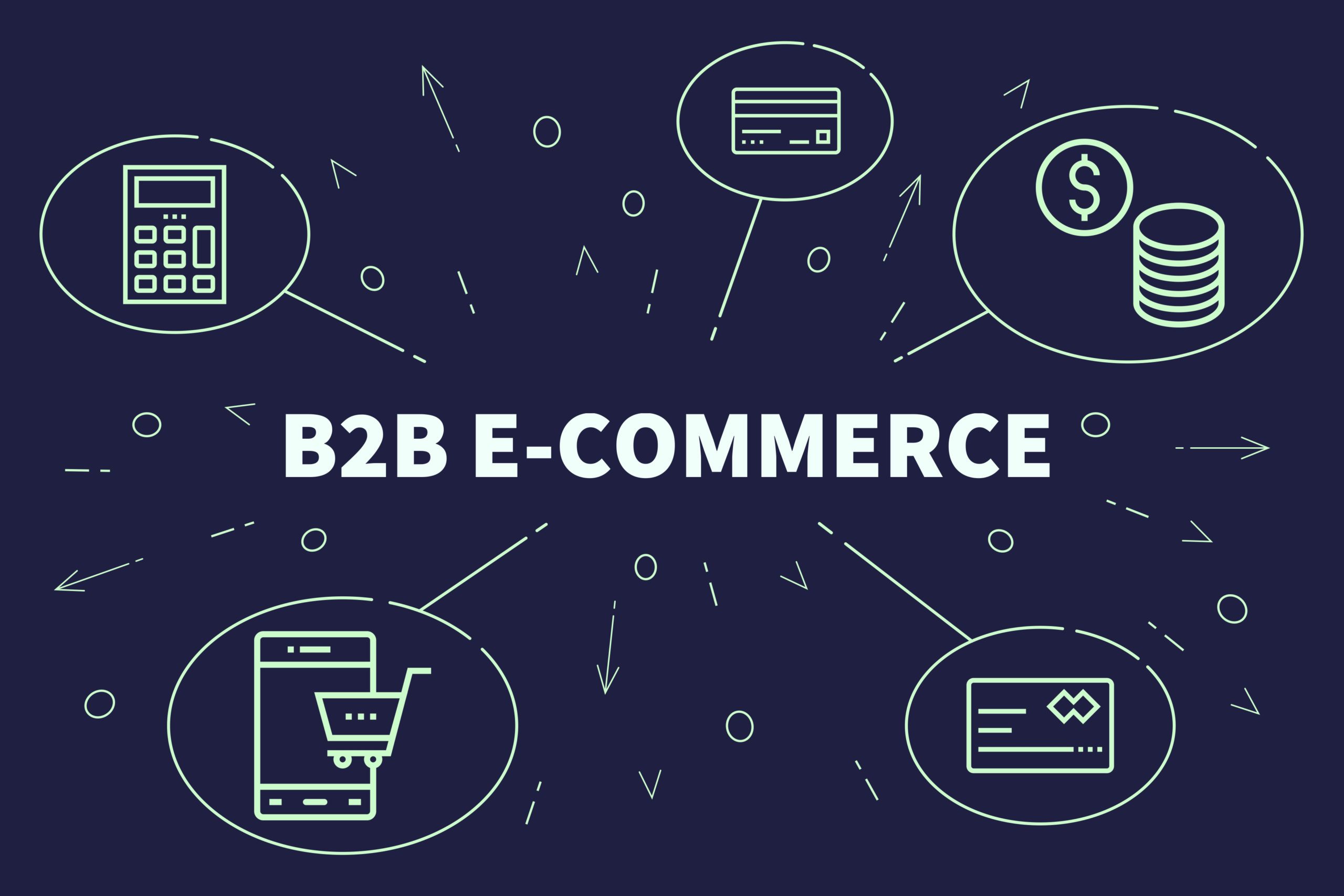Definition and Purpose
Overview of E-Commerce Terms of Use
The E-commerce industry has witnessed rapid growth over the years, and with this growth, comes the need for clear and concise terms of use agreements that protect both the buyer ( B2B ) and the seller. A well-crafted Terms of Use (ToU) document is essential to establish a mutually beneficial relationship between the two parties.
The purpose of an E-commerce ToU agreement in the B2B context is to outline the responsibilities, expectations, and obligations of both the buyer and seller. This document serves as a foundation for the transaction, providing clarity on matters such as payment terms, delivery schedules, warranties, liability, and dispute resolution.

An effective ToU agreement should include the following key components:
- Payment Terms Clearly outline the payment methods, amounts, and due dates to avoid any misunderstandings or disputes.
- Delivery Schedules Specify the delivery timelines, modes of transportation, and any relevant logistics details.
- Warranty and Liability: Define the scope of warranties offered by the seller, including duration and coverage areas, as well as the liability limitations in case of defects or damages.
- Intellectual Property (IP) Rights Clarify the ownership, use, and protection of IP related to products, services, or software provided under the agreement.
- Termination and Cancellation: Outline the procedures for termination or cancellation of the agreement due to non-compliance, breach, or mutual consent.
- Governing Law and Jurisdiction Specify the applicable laws and jurisdiction that will govern any disputes arising from the agreement.
- Dispute Resolution Establish a process for resolving disputes, including mediation, arbitration, or court proceedings, as agreed upon by both parties.
E-commerce ToU agreements in B2B transactions should be comprehensive, clear, and concise to avoid any potential misunderstandings or conflicts. By incorporating these essential components, businesses can establish a solid foundation for their online transactions, protecting themselves from risks while promoting mutual trust and cooperation.
In conclusion, a well-crafted E-commerce ToU agreement in the B2B context is vital to ensure successful online transactions, minimizing risks and fostering long-term relationships between buyers and sellers. By including essential components such as payment terms, delivery schedules, warranties, IP rights, termination procedures, governing law, and dispute resolution mechanisms, businesses can create a robust framework for their e-commerce operations.
Definition of B2B ecommerce terms of use.
The term ‘Business-to-Business’ or ‘B2B’ e-commerce refers to electronic commerce transactions between businesses, typically involving the exchange of goods, services, or information over computer networks. This form of e-commerce focuses on facilitating commercial activities between businesses, rather than between businesses and consumers.
When it comes to the terms of use in B2B ecommerce, several key aspects come into play. The primary objective is to establish a clear framework that governs the interactions between businesses using an online platform or marketplace. This includes setting out rules for registration, account management, product purchasing, and payment processing.
A comprehensive set of ‘Terms of Use’ typically covers the following areas:
- Purpose and Scope: Defines the purpose and scope of the B2B ecommerce platform or marketplace, including its intended use, available services, and any specific business categories it caters to.
- Registration and Account Management: Explains the process for registering an account on the platform, including necessary information required from users, account activation and deactivation processes, and responsibilities of registered users.
- Product Purchasing and Availability: Describes how products or services are available for purchase on the platform, including any conditions that may apply to their availability, pricing, and shipping terms.
- Payment Terms: Outlines the accepted payment methods, payment processing timelines, refund policies, and any additional fees associated with transactions conducted through the B2B ecommerce platform.
- Intellectual Property Rights: Addresses issues related to copyright, trademarks, or other intellectual property rights that may arise from content hosted on or accessed through the platform.
- Liability and Disclaimers: Defines the limits of liability for both the business operating the B2B ecommerce platform and its users in case of any disputes or losses resulting from use of the platform.
- Indemnification: Specifies circumstances under which one party may be indemnified against claims, demands, costs, damages, or expenses arising out of or in connection with another’s breach of the agreement terms.
- Governing Law and Jurisdiction: Specifies the laws of a particular jurisdiction as applicable to any disputes that might arise from use of the B2B ecommerce platform and the jurisdiction for resolving such disputes through legal action.
- Modifications to Terms of Use: Describes the process by which the terms of use may be modified or updated, including any notice requirements or approval processes that must be followed.
- 1Termination of Agreement: Outlines the conditions under which the agreement between a business and the B2B ecommerce platform provider may be terminated, such as non-payment of fees or material breaches of the terms of use.
The comprehensive ‘Terms of Use’ document serves as a critical component for establishing trust within a B2B e-commerce platform by clearly communicating the rules, responsibilities, and expectations to both businesses and their users. It acts as a guiding framework that helps ensure fair and smooth transactions among all parties involved in electronic commerce.
Key Concepts
User Account and Registration
The terms of use for an e-commerce platform, particularly in the context of Business-to-Business (B2B) transactions, encompass a comprehensive agreement between users and the service provider. It is essential to clearly outline these terms to protect both parties’ interests while promoting a smooth and secure transaction experience.
User Account and Registration: The process begins with user registration where an individual or business entity creates an account on the platform by providing required information, such as name, email address, and password. This step is crucial for identity verification and access control to ensure that users can securely manage their accounts.
During the registration process, it’s common for platforms to require users to accept a set of Terms of Service or User Agreement, which outlines the rules, guidelines, and expectations for using the platform. These terms typically include but are not limited to:
Eligibility
The conditions under which an individual or business is eligible to create and use a user account.
Data Protection and Privacy
How personal data collected during registration will be used, stored, shared with third parties if applicable, and protected. This includes information about cookies, tracking mechanisms, and any other tools the platform may utilize for analytics or advertising purposes.
Account Security
Responsibilities of users regarding account security, such as changing passwords, enabling two-factor authentication (2FA) if available, and immediately reporting any unauthorized activity. The platform’s policies on account compromise and how it will be handled also need to be clearly outlined.
Payment Terms and Methods
Information about the payment methods accepted by the platform and conditions regarding refunds, cancellations, and charges related to transactions facilitated through the service. This can include specifics about bank transfers, credit/debit cards, or other forms of electronic payment.
E-commerce Platform Use Rules
Specific rules governing user behavior on the platform, such as prohibited activities (e.g., spamming, hacking attempts), usage limits for certain features, and any requirements for product or service listings.
Intellectual Property Rights
The rights and responsibilities of both parties concerning intellectual property. This may include copyright law, patents, trademarks, and trade secrets related to products or services offered on the platform.
Dispute Resolution
Procedures for resolving disputes that might arise between users, including mediation and arbitration processes, if applicable.
Termination of Account/Service
Conditions under which a user’s account may be suspended or terminated. This can include non-compliance with terms, abuse of the platform, failure to pay fees when due, etc.
Understanding and agreeing upon these Terms of Use is vital for ensuring that all users have a clear understanding of their responsibilities while using the e-commerce platform. Regular updates to these terms may be necessary as the platform evolves or legal requirements change.
Description of user account creation process.
To create a new user account on our e-commerce platform, please follow the steps outlined below:
The first step is to navigate to the website and click on the “Register” or “Create an Account” button located at the top right corner of the page. This will redirect you to the registration page.
On the registration page, you will be required to provide some basic information about yourself, including your name, email address, password, and other contact details. The fields for this information are clearly labeled and should be filled in accurately.
The email address you enter during registration will become your login username, so ensure that it is a valid and easily rememberable one.
Next, you will need to create a strong password that meets the requirements outlined on the page. These requirements typically include a minimum length of 8-12 characters, a combination of uppercase letters, numbers, and special characters.
A password strength indicator or meter is often provided to help guide you in creating a sufficiently secure password. Be careful when choosing your password as it will be used to protect your account from unauthorized access.
Once you have entered all the required information and created a strong password, click on the “Register” or “Create Account” button to submit your application for a new user account. You may need to agree to our terms of service and conditions before completing this step.
A verification link will be sent to the email address you provided during registration. Open this link in your web browser and follow any additional instructions provided on that page. This is an important security measure designed to prevent automated spam accounts from being created.
After clicking the verification link, you will be redirected back to our website where you can log in with your new account details using your email address and password. You may be prompted to fill out additional information during this process as part of setting up your profile or completing your registration.
Upon successful login, you should see a dashboard or account summary page that provides an overview of your order history, payment methods, addresses, and other relevant details. This page serves as the central hub for managing your e-commerce account, so be sure to familiarize yourself with its various features and functionality.
Your new user account is now ready to use! You can browse our website, place orders, track packages, and access various other features based on the type of account you have (B2C or B2B). If you encounter any difficulties during registration or experience technical issues with your account, please contact us via email or phone for assistance.
As a registered user, you should be aware that our e-commerce platform offers several security measures to protect your account from unauthorized access. These include but are not limited to: two-factor authentication, password hashing, secure payment processing, and regular software updates. You can help maintain the integrity of your account by regularly updating your browser and operating system, using strong passwords, and reporting any suspicious activity immediately.
We strive to provide a seamless user experience across all devices and browsers. However, you may encounter issues with some features or functionality on certain platforms. If this is the case, please contact our support team for assistance in resolving the issue. We will do our best to resolve the problem promptly and ensure your continued access to our services.
We appreciate your business and value the trust you have placed in our company by registering an account with us. We are committed to providing you with excellent customer service, ensuring timely delivery of products, and offering competitive pricing for all our B2B customers. If you have any questions or concerns about your account or our services in general, please do not hesitate to contact us.
Thank you again for choosing us as your e-commerce partner!
Login and Password Security
Login and password security is a critical aspect of e-commerce, particularly for businesses operating on a B2B (Business to Business) platform. In this context, it’s essential to understand the terms of use that govern login and password management.
B2B e-commerce platforms involve multiple stakeholders, including buyers, sellers, administrators, and third-party service providers. Each entity requires a unique set of login credentials to access sensitive information and perform various tasks. To prevent unauthorized access, it’s vital to implement robust security measures, including strong passwords and two-factor authentication.
The terms of use for login and password security should clearly outline the following:
- Password complexity requirements: The minimum password length, required characters (e.g., uppercase, lowercase, numbers, special characters), and any other constraints should be specified.
- Password reset procedures: In case a user forgets their password or experiences a login issue, the terms of use should detail the steps to reset the password and regain access to the account.
- Account lockout policies: To prevent brute-force attacks, it’s recommended to implement an account lockout policy that temporarily blocks a user’s account after a specified number of failed login attempts.
- Two-factor authentication (2FA) requirements: The terms of use should clearly state the need for 2FA and specify the methods allowed, such as SMS or email verification codes, authenticator apps, or biometric authentication (e.g., fingerprint or face recognition).
- Session timeout policies: To ensure that users log out automatically after a period of inactivity, session timeout policies should be outlined.
- User responsibility and liability: The terms of use should emphasize the importance of user responsibility for maintaining password security and preventing unauthorized access to sensitive information.
- Platform monitoring and maintenance: Regular security audits, vulnerability assessments, and software updates are essential for maintaining a secure e-commerce platform. The terms of use should highlight the efforts made by the platform administrators to ensure a safe environment for all users.
- Notification policies: In case of a data breach or unauthorized access, the terms of use should detail how users will be notified and the steps taken to mitigate any potential damage.
- Compliance with laws and regulations: The e-commerce platform must comply with relevant laws and regulations regarding login and password security, such as GDPR (General Data Protection Regulation) in the European Union or CCPA (California Consumer Privacy Act) in California, USA.
- 1Revision and updates: Finally, the terms of use should include a statement outlining when they will be revised or updated and how users will be notified of any changes.
In summary, the terms of use for login and password security on a B2B e-commerce platform must comprehensively cover all aspects of user access management to ensure a secure environment for businesses to operate within. By understanding these requirements, platform administrators can implement effective measures to safeguard sensitive information and protect against potential threats.
Guidelines for secure login and password management.
When it comes to e-commerce platforms that cater to businesses (B2B), security is of paramount importance. A safe and secure login process helps prevent unauthorized access, protects sensitive business information, and maintains the trust of clients.
The first step towards a secure login system is to use strong and unique passwords for each user account. This includes administrators, managers, employees, and other stakeholders. Passwords should be at least 12 characters long, containing a mix of uppercase letters, lowercase letters, numbers, and special characters.
Password managers can help generate and store complex passwords, making it easier for users to remember and access them. However, it is crucial that the password manager itself has robust security features in place, such as end-to-end encryption, two-factor authentication (2FA), and regular security audits.
Two-Factor Authentication (2FA) adds an extra layer of security to login processes by requiring users to provide a second form of verification, aside from their password. This can be done through authenticator apps, SMS or voice calls, fingerprint recognition, facial recognition, or smart cards. 2FA significantly reduces the risk of hacking and phishing attacks.
Another critical aspect is session management and timeout. After a period of inactivity, user sessions should automatically expire to prevent unauthorized access even if an attacker intercepts sensitive information during transit. This can be implemented using time-out settings or smart security protocols that detect unusual behavior.
E-commerce platforms B2B should also consider implementing multi-factor authentication (MFA), which goes beyond 2FA by requiring users to provide additional information, such as a code sent to their email or the answer to a security question. This adds another layer of protection and reduces the risk of account compromise.
Furthermore, it is essential for e-commerce platforms B2B to provide transparent guidelines on password management best practices. These can include regular password updates, avoiding common patterns such as consecutive numbers or adjacent letters, and not reusing passwords across multiple accounts.
The importance of regular security audits cannot be overstated in the context of e-commerce platforms catering to businesses (B2B). By conducting thorough assessments of login systems, administrators and security personnel can identify potential vulnerabilities, address them promptly, and maintain a secure environment that protects sensitive business information.
Finally, it is crucial for e-commerce platforms B2B to ensure compliance with data protection regulations such as GDPR, PCI-DSS, HIPAA, and CCPA. This includes providing robust password security measures, implementing access controls, and conducting regular security assessments to safeguard sensitive business information and protect against breaches.
By following these guidelines on secure login and password management for e-commerce platforms catering to businesses (B2B), organizations can minimize the risks associated with cyberattacks, ensure a safe working environment, and maintain trust among clients and stakeholders.
Additionally, providing training and education on secure password practices to employees is essential in maintaining the security posture of an organization. This includes workshops, awareness campaigns, and ongoing guidance on best practices for password management.
Finally, it’s worth noting that e-commerce platforms catering to B2B should also provide robust support for their customers when issues arise, including dedicated help lines, online chat facilities and comprehensive documentation to minimize the risks of downtime and ensure seamless operations.
Use of Website Content
Licenses and Permissions
In e-commerce settings, especially those catering to business-to-business (B2B) transactions, the terms of use often include sections on licenses and permissions. These are crucial for clarifying the rights and obligations of both the buyer and the seller in regard to intellectual property.
One key aspect is the grant of a license or permission for specific uses such as reproduction, distribution, and modification of content or software provided by the e-commerce platform or its suppliers.
This may include permissions for use within their own businesses, allowing B2B customers to reproduce marketing materials or product information for internal purposes. However, it also often specifies any restrictions on how this licensed material can be used, such as prohibition on using trademarks without permission.
Beyond these general rights and restrictions, e-commerce terms of use may address specific permissions related to the usage of platform functionalities, such as data access or API (Application Programming Interface) access. For instance, they might specify conditions under which a B2B customer is granted access to detailed sales reports or the ability to integrate their own products with the platform’s APIs.
Another critical aspect often addressed in e-commerce terms of use, particularly for B2B customers, is data privacy and usage rights. This may include provisions related to how personal data is collected, stored, processed, and shared within the context of their business relationship or transactions conducted through the platform. Some platforms may require explicit consent from users before collecting or processing specific types of data.
Additionally, terms of use for e-commerce platforms serving B2B customers often outline responsibilities regarding copyright infringement claims. This can include procedures to follow in case a B2B customer is accused of infringing on another user’s content or intellectual property rights through the platform. These policies aim to ensure fair use and provide clear guidelines on how complaints will be addressed.
In many cases, e-commerce platforms also specify the applicable law governing disputes between them and their B2B customers or between B2B customers themselves in transactions facilitated through the platform. This can include clauses addressing jurisdictional issues—where legal disputes should be resolved—and what laws govern the interpretation of the terms of use.
Finally, many e-commerce platforms for B2B sales include sections on termination and cancellation rights. These may outline under what conditions either party may end or modify their agreement to use the platform’s services or access its products. This can include scenarios where a customer violates the terms of use or is deemed a risk by the platform.
These are just some of the key elements that might be included in the licenses and permissions sections of e-commerce terms of use for B2B transactions, and their specific content can vary widely depending on the policies and practices of the platform in question.
Explanation of licenses and permissions granted to users.
The explanation of licenses and permissions granted to users in an E-commerce Terms of Use document for Business-to-Business (B2B) transactions is a crucial section that outlines the rights and responsibilities of both the buyer and seller. This section aims to provide clarity on what is allowed and not allowed within the framework of the agreement.
Typically, licenses granted to users may include the right to use software or other digital products, reproduce and distribute materials provided by the seller, and modify certain aspects of the product or service as necessary for its intended purpose. Permissions granted to users may encompass the ability to access and utilize specific features or functionalities within a platform or system.
On the other hand, licenses may be restricted in various ways, such as limiting the scope of activities that can be performed under the license, specifying conditions under which the licensed material can be used (e.g., for internal use only), or requiring users to maintain confidentiality and protect sensitive information.
Permissions granted to users often come with caveats, including restrictions on resale or redistribution, requirements for attribution or acknowledgement of the seller’s intellectual property rights, and limitations on modifications or derivative works that can be created based on the licensed material. By clearly outlining these terms and conditions, B2B e-commerce agreements can help ensure that both parties understand their roles and responsibilities within the transaction.
When drafting licenses and permissions in E-commerce Terms of Use for B2B transactions, it is essential to carefully consider the specific requirements and constraints of the agreement. This may involve tailoring language to address industry-specific issues or ensuring compliance with applicable laws and regulations (e.g., those related to data protection, intellectual property rights, or consumer protection). By providing a clear and comprehensive explanation of licenses and permissions granted to users, B2B e-commerce agreements can promote transparency, trust, and cooperation between buyers and sellers.
Copyright and Trademark Notices
Copyright and trademark notices are essential components of e-commerce terms of use, particularly for businesses operating on a B2B (Business-to-Business) model. These notices serve as a formal declaration that outlines the rights of both the business and its clients or partners regarding intellectual property, such as copyrights and trademarks.
Copyright notices typically inform users about the ownership and restrictions associated with copyrighted materials on the website. This includes the types of content that are subject to copyright protection (e.g., text, images, software), how they can be used, and what constitutes infringement. For e-commerce platforms, this might cover everything from product descriptions and images to technical documentation and proprietary code.
Trademarks are distinct and unique symbols, names, or phrases used by a business to identify its products or services. A trademark notice on the website’s terms of use alerts visitors that certain logos, slogans, or other elements may be protected under trademark law. This serves as a warning against using these marks without permission.
In B2B e-commerce, copyright and trademark notices are crucial because they protect both parties’ interests. On one hand, the business seeks to safeguard its intellectual property and prevent unauthorized use by clients or partners. On the other hand, clients must be aware of the terms under which they can use copyrighted materials, ensuring they don’t inadvertently infringe on the business’s rights.
These notices are usually placed in a prominent location within the e-commerce platform, such as the website footer, product descriptions, or licensing agreements. Their primary purpose is to provide transparency and clarity about what users can do with intellectual property contained within or accessed through the site.
The specific details included in these notices may vary depending on the jurisdiction, industry, or type of business involved. However, they typically include a statement acknowledging the copyright owner (the business), specifying the date and year of publication, and indicating which elements are protected by law.
Moreover, copyright and trademark notices can help e-commerce businesses mitigate legal risks associated with intellectual property infringement. By clearly outlining what is allowed or not allowed in terms of use, they can reduce the likelihood of disputes arising from unauthorized use of copyrighted materials.
In addition to being legally sound, these notices also play a crucial role in building trust and credibility within the B2B e-commerce community. By openly disclosing their intellectual property policies and guidelines, businesses demonstrate transparency and accountability, which is essential for fostering long-term business relationships and maintaining a positive reputation within the market.
Ultimately, including copyright and trademark notices in e-commerce terms of use is a critical component of any B2B operation seeking to protect its intellectual property rights while providing clear guidance on what users can do with copyrighted materials. By adopting this best practice, businesses can establish robust policies that safeguard their interests while promoting responsible and respectful behavior among clients or partners.
Description of copyright and trademark ownership.
Copyright and trademark ownership are essential concepts in the context of e-commerce, particularly for businesses-to-business (B2B) transactions.
A copyright is a form of intellectual property protection that gives the creator of an original work exclusive rights to reproduce, distribute, and display the work, as well as create derivative works. This can include literary works, musical compositions, artistic works, and more.
Trademarks, on the other hand, are symbols or phrases that identify a business’s goods or services and distinguish them from those of competitors. A trademark can be a word, phrase, logo, shape, sound, or smell that is unique to a particular business.
In e-commerce B2B transactions, it’s common for businesses to have multiple copyrights and trademarks related to their products, services, and branding. For instance, a fashion brand may own the copyright to its designs, logos, and advertising campaigns, while also using specific product names and taglines that are registered as trademarks.
The ownership of these intellectual property rights is critical in ensuring that businesses can maintain control over how their creative works are used and distributed. This includes preventing unauthorized use or reproduction of their work without permission, which could lead to financial losses and damage to reputation.
When entering into e-commerce B2B terms of use, businesses typically agree to respect each other’s intellectual property rights. This may involve clauses such as:
- Granting the other party a non-exclusive license to use the relevant copyrighted or trademarked material for specific purposes.
- Restricting the other party from reproducing, modifying, or distributing the material without permission.
- Requiring the other party to provide attribution and notice of ownership when using the material.
- Prohibiting the other party from engaging in conduct that would dilute or tarnish the trademark’s distinctiveness.
The specific terms and conditions governing copyright and trademark ownership can vary significantly depending on the nature of the e-commerce transaction, the parties involved, and applicable laws and regulations. As such, it’s essential for businesses to carefully review and negotiate these terms to ensure they align with their interests and protect their valuable intellectual property rights.
By understanding and respecting each other’s copyright and trademark ownership, e-commerce B2B partners can maintain a mutually beneficial relationship built on trust, cooperation, and the protection of shared intellectual assets.
User Conduct and Responsibilities
Prohibited Activities
The E-commerce Terms of Use for Business-to-Business (B2B) transactions typically outline the prohibited activities that can lead to account suspension or termination. These terms aim to maintain a fair and secure online marketplace, protecting both buyers and sellers from potential risks.
Prohibited activities in B2B e-commerce platforms may include, but are not limited to:
- Hacking or unauthorized access Any attempt to gain unauthorized access to an account, server, or other secure systems is strictly prohibited. This includes attempts to breach security measures, exploit vulnerabilities, or use malicious software.
- Spamming and phishing Unsolicited emails, messages, or any form of communication that aims to deceive, mislead, or coerce users into divulging sensitive information is considered a prohibited activity.
- Intellectual property infringement Using someone else’s copyrighted material, trademarks, or trade secrets without permission is strictly prohibited. This includes selling counterfeit goods, using pirated software, or distributing copyrighted content.
- False advertising and misrepresentation Making false claims about products or services, including fake reviews, misleading product descriptions, or exaggerating benefits is considered a prohibited activity.
- Price manipulation and abuse of pricing tools Using price-fixing tactics, artificially inflating prices, or abusing pricing tools to gain an unfair advantage over other sellers is strictly prohibited.
- Promoting illicit activities Encouraging, facilitating, or promoting illegal activities, including but not limited to, human trafficking, money laundering, or terrorism, is considered a severe breach of these terms and will be reported to the authorities immediately.
These prohibited activities are designed to maintain a fair, secure, and trustworthy e-commerce environment. Buyers and sellers who engage in these activities may face account suspension or termination, as well as potential legal consequences. It’s essential for all users to carefully review and adhere to the E-commerce Terms of Use to avoid any issues or penalties.
The e-commerce platform reserves the right to update, modify, or change these terms at any time without prior notice. Users are expected to regularly review the updated terms to ensure compliance with all rules and regulations.
List of prohibited activities on the website.
The website’s E-commerce terms of use for B2B (Business-to-Business) transactions outline specific prohibited activities that users are not allowed to engage in while utilizing the platform.
Some of these prohibited activities include:
- Unauthorized access and tampering: Users are strictly forbidden from attempting to gain unauthorized access to any part of the website, its systems or databases through any means, including hacking, brute force attacks, or other similar methods.
- Interference with site functionality: Activities that interfere with the proper functioning of the website or its services, such as overloading, flooding, spamming, or disrupting data integrity are strictly prohibited.
- Violating intellectual property rights: Users must respect the intellectual property rights of others and refrain from reproducing, distributing, displaying, performing, creating derivative works of, or otherwise exploiting any content that they do not have explicit permission to use.
- Engaging in spamming: Spamming activities such as sending unsolicited emails, instant messages, or other electronic communications to individuals who did not consent to receiving them are prohibited.
- Posting inaccurate information: Users must ensure the accuracy of any information posted on the website and avoid posting false, misleading, defamatory, or otherwise harmful content.
- Engaging in phishing and spoofing: Activities that mimic legitimate communications from the website or its partners with the intent to deceive users into divulging sensitive information are strictly prohibited.
- Participating in pyramid schemes: Any activities related to pyramid schemes, ponzi schemes, or other multi-level marketing arrangements are prohibited on the website.
- Facilitating fraudulent transactions: Users must refrain from facilitating or engaging in any activity that could be reasonably construed as fraud, including but not limited to: using stolen credit cards; providing false shipping information; using fake addresses; and misrepresenting goods or services offered for sale on the site.
- Violating export laws and regulations: Users must comply with all applicable export laws and regulations in relation to transactions involving restricted or prohibited items.
Reporting Misconduct
The reporting of misconduct on an e-commerce platform is typically governed by the terms of use agreement between buyers and sellers, particularly in business-to-business (B2B) transactions. The terms of use should clearly outline the procedures for reporting any form of misconduct or unethical behavior among users.
In B2B settings, where relationships are often long-term and complex, maintaining a high level of integrity and ethical behavior is crucial to ensuring continued trust and cooperation between partners. This includes adhering to standards of honesty in business practices, respecting intellectual property rights, and observing regulatory requirements.
When misconduct is reported, the e-commerce platform should have a defined process for handling such complaints. This process typically involves an initial assessment to verify the authenticity of the complaint, followed by a thorough investigation into the matter. The findings of this investigation may lead to disciplinary actions against the offending party, which could range from warnings to suspension or even termination of their account, depending on the severity and nature of the misconduct.
The terms of use should also specify what constitutes misconduct in the context of B2B e-commerce. This can include, but is not limited to, fraudulent activities, violation of data privacy laws, non-compliance with regulatory requirements, harassment or discrimination against other users, and any form of unfair competition that might jeopardize the integrity of the market.
Additionally, the terms of use should clearly outline the responsibilities of both the platform administrators and the users in handling reported misconduct. This includes the need for transparency in investigations and disciplinary actions, the right to appeal decisions made by the platform administrators, and the obligation of all parties involved to maintain confidentiality as needed during investigations.
Moreover, effective communication is a critical aspect of managing misconduct on e-commerce platforms. The terms of use should specify how users will be informed about reported incidents, how they can report incidents themselves if necessary, and what support services are available for victims of misconduct or those affected by such incidents.
In conclusion, reporting misconduct in the context of B2B e-commerce is a serious matter that requires a detailed and structured approach outlined clearly within the terms of use. This not only maintains the integrity and trustworthiness of the platform but also ensures compliance with relevant laws and regulations.
Procedure for reporting misconduct or abuse.
We take all reports of misconduct or abuse seriously and encourage any user to report such incidents to our customer support team.
If you wish to report misconduct or abuse, please submit a written complaint via email to our customer support email address or through our online contact form on our website.
All complaints will be promptly reviewed by our Customer Support Team who will investigate the matter and determine the appropriate course of action based on our terms of use and applicable laws and regulations.
Reports of misconduct or abuse can include, but are not limited to:
- Unauthorized access to another user’s account
- Violations of intellectual property rights (e.g. copyright, trademark)
- Spamming, phishing, hacking or other forms of malicious behavior
- Breach of confidentiality or unauthorized disclosure of confidential information
- Any form of abusive language or harassment towards another user
We reserve the right to take any necessary steps to investigate and resolve reported misconduct or abuse, including but not limited to:
- Temporary suspension of the user’s account
- Cancellation of the user’s account
- Banning from using our services
- Lawsuit against the user who perpetrated the misconduct or abuse
In case a report is made against a third-party website linked to ours, we may request additional information and cooperation from the relevant authorities in order to take action.
It is essential that you provide accurate information when submitting your complaint as this will enable us to investigate and address the issue efficiently. You can also contact law enforcement agencies if necessary for further assistance or action.
After making a report, we may request additional details from the complainant in order to better understand the situation. This is done on a case-by-case basis depending on the nature of the complaint.
We will keep you informed regarding any actions taken as a result of your report and appreciate your patience and understanding throughout this process.
Purchase Order and Payment Terms
Cancellation Policy
When it comes to e-commerce terms of use for business-to-business (B2B) transactions, the cancellation policy plays a crucial role in establishing trust and clear expectations between the buyer and seller.
In general, a well-structured B2B e-commerce website should include a comprehensive cancellation policy that outlines the circumstances under which orders may be canceled or modified.
This policy should also specify the procedures for canceling or modifying an order, including any deadlines or timeframes for doing so.
The policy might cover issues such as:
- Refund and restocking fees: Details on how refunds will be handled in case of cancellations or returns
- Cancellation procedures: Clear guidelines on the steps to take when requesting a cancellation, including any necessary documentation or communication with customer support
- Timeframes for cancellation: Specific deadlines by which orders must be canceled or modified to avoid penalties or fees
- Consequences of non-compliance: Explanation of the consequences for failing to follow the cancellation procedures, including potential penalties or fees
- Contact information: Contact details for customer support in case customers need assistance with cancellations or modifications
A clear and concise cancellation policy is essential for B2B e-commerce websites as it helps to:
- Reduce misunderstandings and miscommunications between buyers and sellers
- Promote transparency and trust in online transactions
- Minimize disputes and complaints related to cancellations or modifications
By establishing a comprehensive and clear cancellation policy, B2B e-commerce websites can foster a more secure and reliable environment for online business dealings.
Description of cancellation policy and procedures.
Cancellation Policy:
In the event of a cancellation, the Buyer’s account will be credited with the full amount paid for the cancelled Order within 30 days from the date of cancellation, in accordance with our Refund and Cancellation Policy. However, this does not apply to certain situations as outlined below.
When Cancellations are Not Accepted
Cancellations will not be accepted in the following circumstances:
- Custom or Made-to-Order Products Orders for custom or made-to-order products cannot be cancelled after production has begun. In such cases, the Buyer may request a cancellation within 24 hours from the time of placing the Order. However, once production starts, cancellations are not possible due to logistical and manufacturing commitments.
- Payment Disputes: If a payment dispute arises with the Bank or Payment Gateway, resulting in non-receipt of payments for an Order, the Buyer may request cancellation within 10 days from the date of payment. However, if payments are received after this period, cancellations cannot be processed.
- Orders Already Shipped Orders that have already been shipped to the Buyer cannot be cancelled and will be treated as final sales.
- Buyer’s Responsibility for Mistakes: The Buyer is responsible for ensuring accurate Order information, including product selection and quantity. If an Order contains mistakes, cancellations or modifications are subject to approval by our team on a case-by-case basis.
Cancellation Procedures
To initiate a cancellation request, the Buyer must contact our Customer Service Team through Email, Phone, or Online Chat within the specified timeframe for each circumstance outlined above. The following information must be provided to process a cancellation request: Order number, reason for cancellation, and any additional details.
Refund Policy
In cases where cancellations are accepted, refunds will be issued in accordance with our Refund and Cancellation Policy within 30 days from the date of cancellation. Refunds may take up to 7-10 business days to process after the refund has been approved.
Return Policy
The Buyer must follow our Return Policy, which outlines procedures for returning products received in a damaged or incorrect condition. To initiate a return request, please contact our Customer Service Team through Email, Phone, or Online Chat within 7 days from the date of delivery.
Modification to this Cancellation Policy
We reserve the right to modify this Cancellation Policy at any time without prior notice. Any modifications will be posted on our website and may affect outstanding orders placed before such modification.
Payment Methods and Security
The payment methods used by e-commerce platforms for Business-to-Business (B2B) transactions are diverse and designed to cater to the unique needs of commercial customers. These include credit cards, wire transfers, electronic checks, online invoicing, and purchase orders.
When it comes to security in B2B e-commerce, terms of use often emphasize confidentiality and data protection for all parties involved. This typically involves encryption methods to safeguard transactions against interception or unauthorized access.
The payment processing for B2B e-commerce can be integrated directly into the platform itself, offering a streamlined experience for both the buyer and seller. Secure sockets layer (SSL) technology is widely used in B2B e-commerce to ensure that financial information remains protected during transactions.
Furthermore, terms of use often include sections detailing payment processing fees, any potential charges associated with transaction services, and information about the settlement of payments, including timeframes for refunds if necessary.
In addition to security measures, B2B e-commerce platforms may also offer authentication protocols for suppliers and buyers, which helps in verifying identities before engaging in transactions. This step is crucial in preventing fraudulent activities in business settings.
The terms of use document usually outlines the rights and responsibilities of both parties involved. This includes the roles of suppliers, buyers, and the platform itself, detailing who is responsible for handling disputes that may arise from transactions.
Lastly, terms of use documents often include sections regarding data retention policies. This pertains to how long transactional and business data will be stored before being deleted or disposed of securely, which can range depending on local laws and regulations.
In essence, the security features in B2B e-commerce platforms are multi-faceted and designed to protect both buyers and sellers from risks such as non-payment, identity theft, and loss of sensitive financial information. The terms of use document provides a clear outline of these measures for users, helping them understand their responsibilities and expectations while using the platform.
Explanation of accepted payment methods and security measures.
We accept various payment methods to cater to the diverse needs of our business-to-business (B2B) customers, ensuring a seamless shopping experience.
The accepted payment methods include:
Credit/Debit Cards
We support major credit and debit cards such as Visa, Mastercard, American Express, and Discover. Our secure payment gateway ensures the card details are encrypted and processed efficiently.
Bank Transfer (WIRE)
For large transactions or business-to-business payments, we accept wire transfers from your bank account to ours. Please note that a minimum transfer amount may apply, and you will need to provide us with your bank’s SWIFT code for processing.
PayPal
As an additional option, we support PayPal for customers who prefer the added security of this online payment service. You can securely link your PayPal account to make payments.
Regarding security measures:
Data Encryption
Our website uses 128-bit SSL (Secure Sockets Layer) encryption to protect sensitive information during transmission, including credit card details and login credentials. This ensures all data exchanged between your browser and our server is encrypted and secure.
Verified by Visa and Mastercard Secure Code
For added security on credit/debit card transactions, we support Verified by Visa and Mastercard Secure Code. These services help prevent unauthorized use of your payment cards and provide an extra layer of protection for you.
Secure Payment Gateway
Our payment gateway is PCI-DSS compliant (Payment Card Industry Data Security Standard) to ensure that our system meets the highest standards of security and data protection, as set by the major credit card companies.
Regular Security Audits
We regularly conduct thorough security audits and assessments to identify vulnerabilities and improve our security posture. This includes monitoring for potential malware, viruses, and other types of cyber threats.
We strive to maintain a secure environment and continually invest in the latest technologies to protect your sensitive information. If you have any questions or concerns about our payment methods and security measures, please do not hesitate to contact us.
Dispute Resolution and Governing Law
Arbitration Agreement
An arbitration agreement is a contract between two or more parties to settle disputes through arbitration rather than litigation. In the context of e-commerce, an arbitration agreement can be included in the terms and conditions of use for business-to-business (B2B) transactions.
Such agreements typically require both parties to submit any disputes arising from the transaction to a neutral third-party arbitrator or panel. This is often preferred over litigation as it provides a more efficient, cost-effective, and private means of resolving disputes.
The arbitration agreement may specify the rules that govern the arbitration process, including the selection of the arbitrators, the procedures for submitting claims, and the time limits for doing so. It can also include provisions governing confidentiality, costs, and other aspects of the arbitration process.
In e-commerce B2B transactions, arbitration agreements can be particularly useful as they often involve parties from different jurisdictions or industries with differing commercial practices. By agreeing to arbitrate disputes, these parties can avoid lengthy and costly court battles while still ensuring a fair resolution to their differences.
However, for an arbitration agreement to be binding and enforceable, it must be carefully drafted and considered by all parties involved. Each party should thoroughly review the terms of use before accepting them, as agreeing to arbitrate disputes can waive certain rights and obligations under applicable law.
For e-commerce businesses, incorporating an arbitration agreement into their terms of use for B2B transactions can help ensure a smoother, more efficient resolution process in case of any disputes. This can ultimately enhance customer satisfaction, reduce costs associated with litigation, and promote the success of business partnerships.
Terms of the arbitration agreement, including jurisdiction and venue.
The Terms of the Arbitration Agreement outline the procedures and rules governing disputes between the parties to an e-commerce transaction. These terms are crucial in ensuring that all parties understand their rights and obligations, as well as the processes for resolving any conflicts that may arise.
Arbitration Jurisdiction:
The arbitration agreement will typically specify the jurisdiction under which the dispute will be resolved. This can be a specific country or state, or a region within a larger territory. It is essential to clearly define the jurisdiction to prevent confusion and ensure consistency in application of the law.
Venue:
Similar to jurisdiction, venue refers to the physical location where the arbitration will take place. This can be a specific city, town, or even a neutral third-party location. The chosen venue should be easily accessible for all parties involved and ensure fairness in the proceedings.
Key Elements of Arbitration Terms:
- Arbitrators’ Qualifications: Specify the qualifications, skills, or expertise required from the arbitrator(s). This ensures that the chosen arbitrator is impartial and has the necessary knowledge to make informed decisions.
- Procedures for Selection: Outline the process for selecting the arbitrator. This can include nomination by one party, mutual agreement between parties, or random selection from a panel of qualified individuals.
- Rules of Evidence and Procedure: Define the rules that govern the collection, presentation, and evaluation of evidence during arbitration. These may be specific to the jurisdiction or based on national or international standards.
- Fees and Costs: Clearly outline who is responsible for paying fees, costs, and expenses related to arbitration. This can include arbitrator’s fees, administrative charges, travel costs, and documentation preparation fees.
- Language and Communication: Specify the language(s) in which the arbitration will be conducted, as well as any requirements for translation or interpretation services. Ensure that all parties understand each other and can communicate effectively during the proceedings.
- Confidentiality and Privacy: Emphasize the importance of maintaining confidentiality and privacy throughout the arbitration process. This ensures that sensitive information remains confidential and respected by all parties involved.
Additional Considerations:
- Applicable Laws: Clearly specify which laws will be applied in case of an arbitration, such as national or international law. Ensure consistency in application and avoid any ambiguity.
- Time Limitations: Establish time limits for initiating arbitration proceedings and submitting claims or responses. This ensures that parties understand their responsibilities and obligations within a specific timeframe.
By clearly outlining the terms of the arbitration agreement, including jurisdiction and venue, all parties can rest assured that any disputes will be resolved fairly and efficiently, in accordance with agreed-upon rules and procedures.
Governing Law and Jurisdiction
Governing Law and Jurisdiction refers to the legal framework that governs the relationship between two or more parties, particularly in business-to-business (B2B) e-commerce transactions. In the context of B2B e-commerce terms of use, governing law and jurisdiction play a crucial role in establishing the laws and regulations that apply to the transaction, as well as the venue for resolving any disputes that may arise.
The governing law clause typically specifies which country’s or state’s laws will govern the contract, including its interpretation, performance, and any disputes that may arise. This is important because different countries have different legal systems, and applying the wrong set of laws can lead to costly and time-consuming disputes.
For example, in a B2B e-commerce transaction between a US-based supplier and a German-based buyer, the governing law clause might specify that the contract will be governed by German law. This means that any disputes that arise from the contract will be resolved according to German laws and regulations.
The jurisdiction clause, on the other hand, specifies which court or venue has jurisdiction over any disputes that may arise. In other words, it determines which country’s courts have the power to hear and decide the dispute.
In the example above, if a dispute arises from the B2B e-commerce transaction between the US-based supplier and the German-based buyer, the jurisdiction clause might specify that any disputes will be resolved in the courts of Germany. This means that the German courts will have the authority to hear and decide the dispute.
When drafting governing law and jurisdiction clauses for B2B e-commerce terms of use, it’s essential to carefully consider several factors, including:
- The laws and regulations of both parties’ countries or states
- The type of business being conducted (e.g., software development, manufacturing, services)
- The nature of the contract (e.g., sales agreement, licensing agreement, partnership agreement)
- The level of risk tolerance for each party
By carefully drafting governing law and jurisdiction clauses that accurately reflect these factors, B2B e-commerce businesses can minimize the risk of disputes and ensure a more efficient and cost-effective resolution process.
Ultimately, effective governance in B2B e-commerce terms of use requires a deep understanding of the relevant laws and regulations, as well as a thoughtful consideration of the specific needs and goals of each business. By prioritizing this important aspect of contract drafting, businesses can build stronger relationships with their partners, reduce the risk of disputes, and achieve greater success in the competitive world of B2B e-commerce.
Description of governing law and jurisdiction for disputes.
The governing law and jurisdiction clause is an essential component of any e-commerce agreement, particularly in B2B (Business-to-Business) transactions. This clause outlines the laws and courts that will govern any disputes or legal issues arising from the agreement.
In a B2B e-commerce context, the parties involved are typically businesses or entities operating within a specific jurisdiction. As such, it is crucial to clearly define which country’s laws and regulations will apply in the event of a dispute.
The purpose of the governing law clause is to provide clarity and certainty for both parties regarding their rights and obligations under the agreement. By specifying the applicable laws and jurisdiction, businesses can reduce the risk of disputes and ensure that any issues are resolved efficiently and effectively.
When drafting an e-commerce B2B terms of use document, it is essential to include a well-defined governing law and jurisdiction clause. This should include:
- Identification of the applicable laws: This will typically be the law of the country where the businesses are based or have their principal place of business.
- Specification of the courts with jurisdiction: This could be the courts of the same country as the applicable laws, or other specific courts agreed upon by the parties.
- Dispute resolution mechanisms: Some agreements may specify alternative dispute resolution methods, such as arbitration or mediation, to resolve disputes more efficiently and effectively.
- Governing law and jurisdiction clause examples:
Example 1: “This agreement shall be governed by and construed in accordance with the laws of the State of California, USA. Any disputes arising out of this agreement shall be resolved through binding arbitration in accordance with the rules of the American Arbitration Association.”.
Example 2: “This agreement is subject to English law and jurisdiction. All disputes arising under or in connection with this agreement shall be resolved through litigation in the courts of England and Wales.”
In summary, the governing law and jurisdiction clause is a critical component of any e-commerce B2B agreement, providing clarity and certainty for both parties regarding their rights and obligations under the agreement.
Changes to Terms of Use
Updates and Amendments
In the context of e-commerce, B2B (business-to-business) transactions involve interactions between companies or organizations, often involving large-scale purchases, complex logistics, and specialized products. As such, the terms of use for these businesses require flexibility to accommodate unique needs and circumstances.
Updates and amendments to e-commerce terms of use in a B2B setting can be essential to address changing business requirements, resolve disputes, or clarify ambiguous terms. These updates often occur due to regulatory changes, shifts in market conditions, or the evolution of business relationships between parties.
Typical scenarios that necessitate updates or amendments to e-commerce terms of use for B2B include but are not limited to:
Changes in applicable laws and regulations: Updates may be required to comply with newly enacted laws, changes to existing laws, or updates to industry-specific regulations.
Modifications to payment terms: Updates might reflect changes in payment schedules, methods of payment (e.g., switching from credit cards to bank transfers), or other financial arrangements between parties.
Shifts in product offerings or services: Amendments may be necessary when one party introduces new products or services that were not originally covered by the terms of use.
Changes in geographic scope or applicability:
Updates might expand coverage to include additional geographic regions, countries, or territories; or
Contractually bind parties operating across international borders to comply with specific foreign laws and regulations.
When preparing updates and amendments for e-commerce terms of use in a B2B context, consider the following steps:
Clearly communicate the purpose and scope of each update;
Consult with relevant stakeholders (including customers, suppliers, partners, or regulatory bodies) to ensure that all parties are informed and agreeable to changes;
Document all updates thoroughly and transparently, including revisions to any referenced documents, policies, or agreements.
Updates to e-commerce terms of use in a B2B environment can significantly impact business operations. Parties must approach these modifications with caution, understanding that they can affect relationships, financial obligations, and overall success within the industry.
Description of process for updating or amending terms of use.
The process of updating or amending the terms of use for an e-commerce platform catering to business-to-business (B2B) transactions involves several key steps, which must be carefully executed to ensure continuity and transparency for all stakeholders involved. Below is a detailed outline of this process.
Step 1: Review and Analysis
The first step involves reviewing the current terms of use document for any outdated or irrelevant information that needs to be updated, removed, or modified in light of new legal requirements, changes in business policies, or user feedback. This is a critical phase where the need for amendments is identified and justified.
Step 2: Notification
The decision to amend the terms of use should be communicated to all stakeholders through official channels, such as email notifications to registered users, B2B partners, or via prominent announcements on the e-commerce platform. This step is crucial for transparency and compliance with legal requirements that demand notice before changes are implemented.
Step 3: Drafting Amendments
The identified updates or amendments are then drafted into a clear and concise document that incorporates necessary changes without creating confusion or impacting the overall understanding of user rights, obligations, and responsibilities. Legal counsel may be consulted to ensure compliance with relevant laws and regulations.
Step 4: Review by Stakeholders
The draft amendments are reviewed and verified for their effectiveness and legal correctness by various stakeholders, including internal legal teams, B2B partners, and external advisors. This multi-step review process is designed to capture feedback, identify potential issues, and confirm that the changes align with the e-commerce platform’s objectives.
Step 5: Implementation
The finalized amended terms of use are then implemented on all relevant platforms, including website updates, notifications sent to users, and communication with B2B partners. This step ensures a seamless transition while also emphasizing the importance of user compliance with new or modified terms.
Step 6: Post-Implementation Review
A post-implementation review is conducted to assess the impact and effectiveness of the amended terms of use, including feedback from users, analysis of any issues that may have arisen, and adjustments made if necessary. This process is crucial for continuous improvement.
By following this detailed process, e-commerce platforms catering to B2B transactions can ensure transparency, compliance with legal requirements, and a smooth update or amendment of their terms of use, which are essential for maintaining the trust and satisfaction of their stakeholders.
- Short Memorandum Of Understanding For Commercial Transactions - August 8, 2024
- Privacy Notice Templates - August 7, 2024
- Paid Business Directory Website Terms Of Use - August 7, 2024









